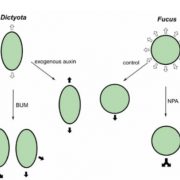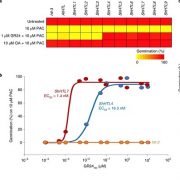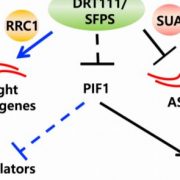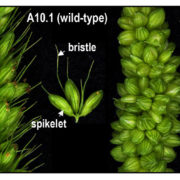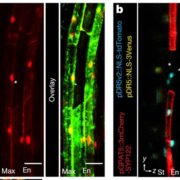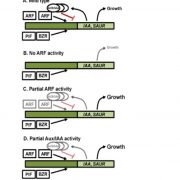Diversity and genetic basis of hydropatterning in inbred maize lines
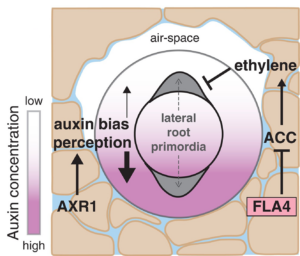 For more than a hundred years, plant biologists have been fascinated by how plants sense and respond to environments that are spatially and temporally heterogenous. Many of these responses occur through the remarkable developmental plasticity of plant growth, such as phototropism and photomorphogenesis. Below ground, root growth and branching patterns as well as root hair formation are highly tuned to the availability of water, nutrients, and even oxygen in the soil matrix. Hydropatterning is the process by which roots respond to water availability through changes in lateral root production. Studies of hydropatterning have been carried out in Arabidopsis, but in this new work, Scharwies et al. determined the extent of hydropatterning in 250 inbred maize lines. The authors found that the percentage of lateral roots forming on the dry size of the root ranged from 0 to 39%; higher proportions of dry-side lateral roots indicates weaker hydropatterning. Interestingly, the inbred lines with stronger hydropatterning also showed deeper roots systems with more brace roots, suggesting that the more efficient placement of lateral roots might allow root resources to be used more efficiently. The authors used GWAS and TWAS approaches to investigate the genetic controls underpinning hydropatterning, and identified several genes involved in auxin signaling, similar to what has been observed in Arabidopsis, as well as genes involved in ethylene synthesis and signaling. The authors also identified a role for an fasciclin-like arabinogalactan protein in hydropatterning, potentially through sensing of environmental cues. (Summary by Mary Williams @PlantTeaching.bsky.social) Science 10.1126/science.ads5999
For more than a hundred years, plant biologists have been fascinated by how plants sense and respond to environments that are spatially and temporally heterogenous. Many of these responses occur through the remarkable developmental plasticity of plant growth, such as phototropism and photomorphogenesis. Below ground, root growth and branching patterns as well as root hair formation are highly tuned to the availability of water, nutrients, and even oxygen in the soil matrix. Hydropatterning is the process by which roots respond to water availability through changes in lateral root production. Studies of hydropatterning have been carried out in Arabidopsis, but in this new work, Scharwies et al. determined the extent of hydropatterning in 250 inbred maize lines. The authors found that the percentage of lateral roots forming on the dry size of the root ranged from 0 to 39%; higher proportions of dry-side lateral roots indicates weaker hydropatterning. Interestingly, the inbred lines with stronger hydropatterning also showed deeper roots systems with more brace roots, suggesting that the more efficient placement of lateral roots might allow root resources to be used more efficiently. The authors used GWAS and TWAS approaches to investigate the genetic controls underpinning hydropatterning, and identified several genes involved in auxin signaling, similar to what has been observed in Arabidopsis, as well as genes involved in ethylene synthesis and signaling. The authors also identified a role for an fasciclin-like arabinogalactan protein in hydropatterning, potentially through sensing of environmental cues. (Summary by Mary Williams @PlantTeaching.bsky.social) Science 10.1126/science.ads5999


